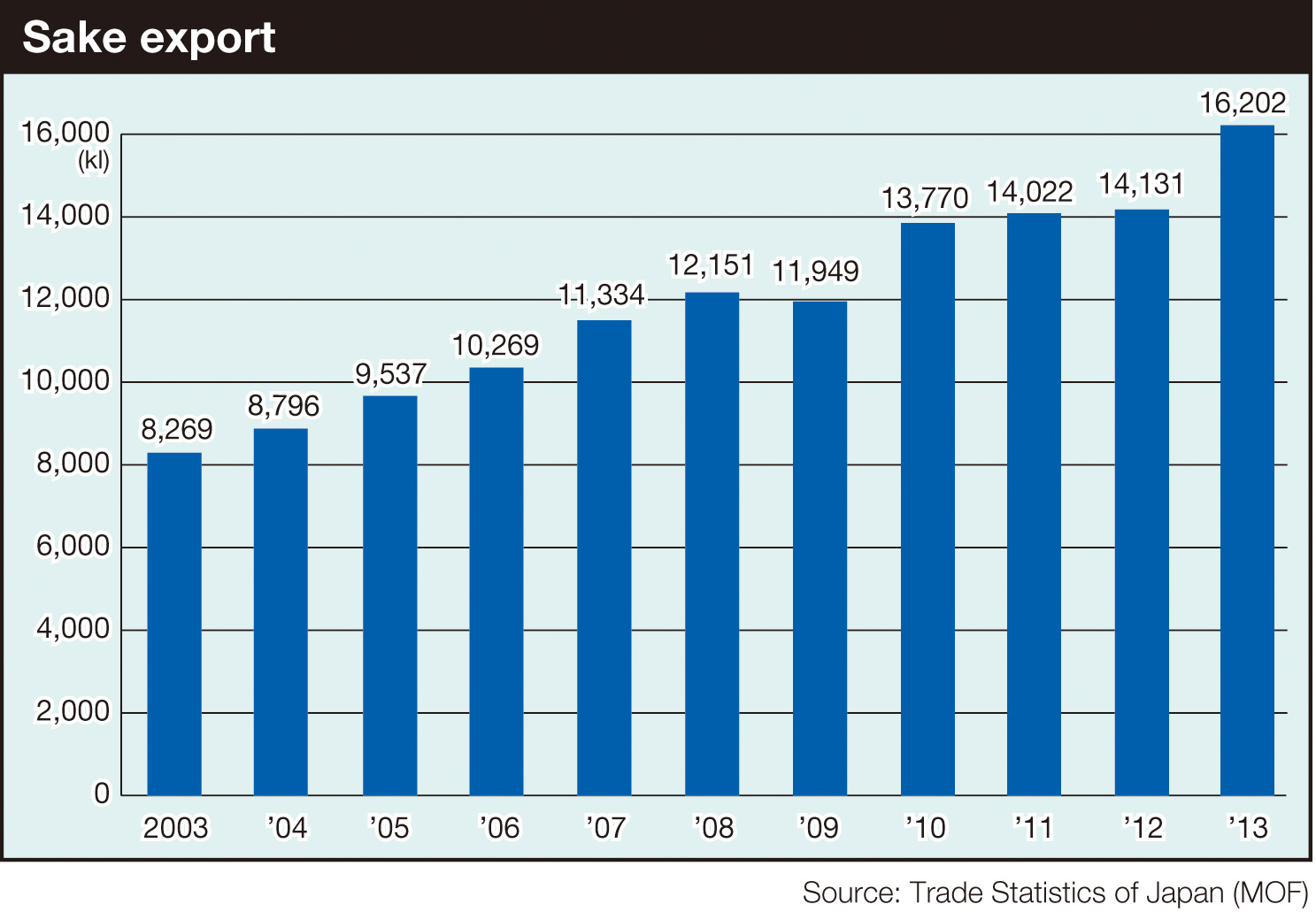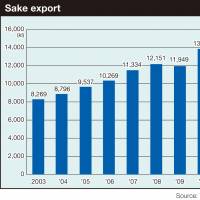Japanese people have been sake drinkers since ancient times. Throughout the history of rice cultivation, sake production went through a number of trials and errors before evolving into what it is today.
However, the volume of sake produced in 2013 was 446,435 kl, which represents just 31 percent of its peak production in the 1970s.
Meanwhile, sake exports are on the increase. According to annual trade statistics by Japan's Ministry of Finance, the export volume of sake has doubled in the past decade, reaching 16,202 kl in 2013. Although it accounts for only 3.6 percent of the total production, it is notable that sake exports are increasing while overall production has remained at approximately the same levels in recent years.
In monetary terms, exports exceeded ¥10 billion in 2013, which is 2.7 times of the value of 2003 exports, but it is still a much lower level compared to the export value of French wine or Scotch whisky. The three largest export destinations for sake are the U.S., Hong Kong and South Korea, while among European countries, only the U.K. (8th) ranks in the top 10 importers.
As a national beverage that symbolizes Japan, including its nature and climate, as well as people's patience, politeness and delicacy, sake is expected to play a role in the export policies as a local resource and contribute to communicating to the world the attractiveness of Japanese culture.



















With your current subscription plan you can comment on stories. However, before writing your first comment, please create a display name in the Profile section of your subscriber account page.